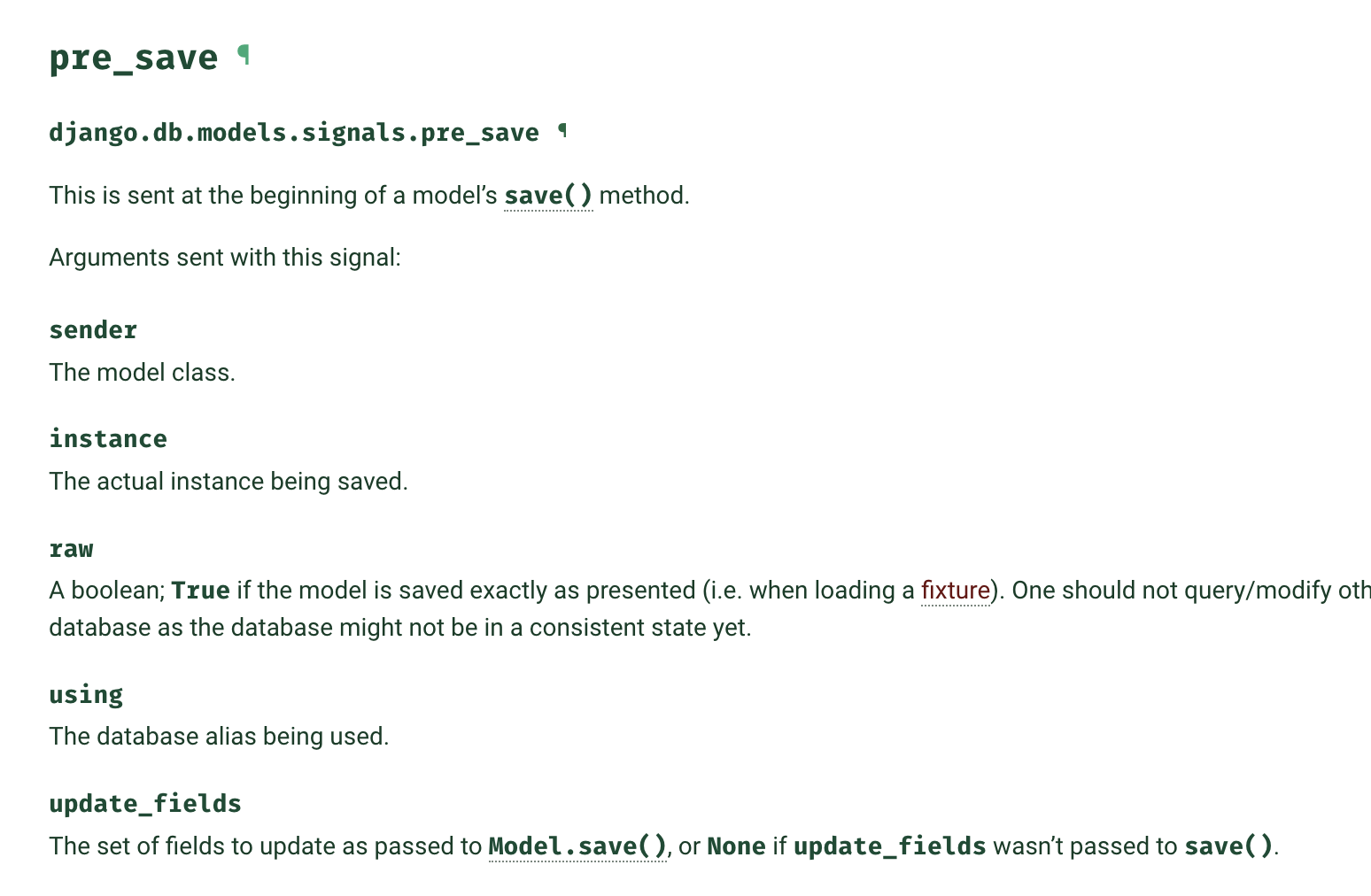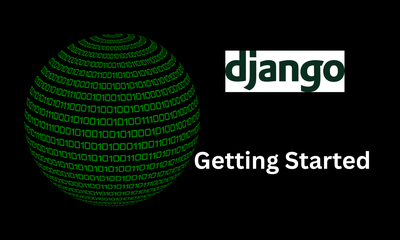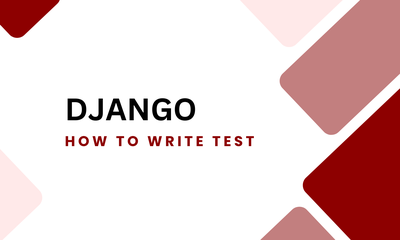Django Model Common Issues: A Guide for Developers at Every Level
By JoeVu, at: March 19, 2024, 4:52 p.m.
Estimated Reading Time: __READING_TIME__ minutes


Django Model Common Issues: A Guide for Developers at Every Level
Django's ORM system is powerful but navigating it can be akin to finding your way through a maze, especially when dealing with model intricacies. This guide is to help developers of all skill levels tackle common and complex issues alike, with practical advice and code snippets. From selecting the right model fields to optimizing database queries for performance, we cover a broad spectrum of challenges.
Our goal is to provide clear solutions to the problems you might face, whether you're just starting out or are deep into Django's advanced features. Join us as we break the ice of Django model issues, paving the way for smoother development experiences.
For Beginners: Laying the Foundation
Understanding Django Model Fields
Issue: Selecting the right field types and grasping the relationships between models can be daunting for Django Freshers. Django offers a variety of field types, including CharField, IntegerField, DecimalField and relationship fields like ForeignKey, ManyToManyField, and OneToOneField. Each serves a different purpose and understanding when to use which is crucial.
Solution: Spend time familiarizing yourself with the different model fields Django offers. Here's a quick example:
class Author(models.Model):
name = models.CharField(max_length=100)
class Book(models.Model):
title = models.CharField(max_length=200)
author = models.ForeignKey(Author, on_delete=models.CASCADE)
contributors = models.ManyToManyField(Author, related_name='contributed_books') # this will create another table for this ManyToMany relationshipMigrations
Issue: Migrations are how Django propagates changes you make to your models into your database schema. Beginners might forget to create or apply migrations after changing models, or face difficulties resolving migration conflicts.
Solution: Always remember to run makemigrations and migrate commands after altering your models. In case of conflicts, carefully review the conflicting migrations and consider manual adjustments or merging strategies.
python manage.py makemigrations
python manage.py migrate QuerySet API Misuse
Issue: QuerySets are powerful, yet their misuse can lead to inefficient database queries. A common mistake is using filter() within a loop, or not using select_related() and prefetch_related() appropriately, which can cause unnecessary database hits.
Solution: Understand the difference between immediate and lazy evaluation of QuerySets and utilize relationship optimizers like select_related() and prefetch_related() to minimize database queries.
# Inefficient
for book in Book.objects.all():
print(book.author.name)
# Efficient
for book in Book.objects.select_related('author').all():
print(book.author.name)Database Indexing
Issue: Without proper indexing, database queries can slow down significantly as the dataset grows. Beginners often overlook the need to add indexes to frequently queried fields.
Solution: Identify fields that are frequently used in filters, and consider adding indexes to those fields in your models using the db_index attribute.
class Book(models.Model):
title = models.CharField(max_length=200, db_index=True)Model Inheritance
Issue: Django supports three forms of model inheritance but understanding when to use abstract base classes, multi-table inheritance, or proxy models can be confusing.
Solution: Choose the type of inheritance based on your needs: use abstract base classes to share fields and methods, multi-table inheritance for creating a database table for the base model, and proxy models if you only need to change the Python behavior without changing the model's fields. Django-Model-Utils is a great package to use.
# Abstract base class example
class BaseModel(models.Model):
created_at = models.DateTimeField(auto_now_add=True) class Meta:
abstract = True
class Article(BaseModel):
article_specific_field = models.CharField(max_length=100)
By addressing these foundational issues, beginners can lay a strong groundwork for more advanced Django development. Stay tuned as we delve into intermediate challenges in the next section of our guide.
For Intermediate Developers: Advancing Your Skills
Complex Query Optimizations
Issue: As applications grow, so does the complexity of the queries needed to retrieve data. Many developers struggle with optimizing these queries, particularly when dealing with large datasets or needing to use advanced filtering and sorting techniques.
Solution: Utilize Django's ORM capabilities to the fullest by leveraging annotations, aggregations, and database functions to reduce query complexity and improve efficiency.
from django.db.models import Count, Q
# Example: Efficiently filtering and annotating a queryset
books_query = Book.objects.filter(
Q(title__icontains='django') | Q(author__name__icontains='django')
).annotate(num_authors=Count('author')).order_by('-num_authors')
# this will generate a query to join different tables. You can print the query by
print(books_query.query)Database Transactions
Issue: Handling database transactions improperly can lead to data inconsistencies and performance bottlenecks. Transactions need to be managed carefully, especially in complex database operations.
Solution: Use Django's transaction management utilities to ensure that your database operations are atomic, thus preventing data inconsistency.
from django.db import transaction
with transaction.atomic():
# Perform your database operations here
# This block of code is executed within a transactionCustom Model Managers and QuerySets
Issue: Not making use of custom model managers and QuerySets can lead to repetitive code and increased maintenance effort. Custom managers and QuerySets help encapsulate common database operations, making your code cleaner and more reusable.
Solution: Define custom managers and QuerySets for operations that are performed frequently, to avoid duplicating query logic across your application. Again, Django-Model-Utils is a great tool.
class PublishedBookManager(models.Manager):
def get_queryset(self):
return super().get_queryset().filter(status='published')
class Book(models.Model):
# fields
objects = models.Manager() # The default manager.
published = PublishedBookManager() # Our custom manager.Signal Misuse
Issue: Django signals allow for decoupled applications to receive notifications of certain actions, such as model saves. However, overusing signals for tasks that could be more straightforwardly accomplished with model methods or overriding save methods can complicate the codebase.
Imagining a case when a model A save signal causes another model B save signal, this also results in model C save signal trigger. What is a mess!!!
Solution: Reserve signals for interactions that truly require decoupled logic. For most model-related operations, prefer overriding model methods.
class MyModel(models.Model):
# fields
def save(self, *args, **kwargs):
# Custom save logic here
super().save(*args, **kwargs)
Database Design
Issue: Inadequate database model design can back developers into a corner as applications scale. Issues such as not planning for scalability or establishing poorly considered relationships between models can severely impact performance and maintainability.
Solution: Engage in thorough planning of your database schema, considering factors like indexing, query optimization, and future scalability. Regularly review and refactor your models to better accommodate growth.
# This is more about strategic planning than a specific code snippet.
# Consider relationships, indexing, and whether certain data should be normalized or denormalized.
EX:
1. What models should we specify the ManyToMany relationship field?
2. Should we add index to a text field in a Django Model?
By tackling these intermediate challenges, developers can significantly improve the robustness, performance, and maintainability of their Django projects. Up next, we'll explore advanced issues that seasoned developers may encounter in their quest for optimal Django applications.
For Advanced Developers: Mastering Complex Architectures
Architectural Decisions
Issue: Making architectural decisions that affect the long-term scalability and maintainability of your application, such as choosing the right database architecture or considering when to implement database sharding.
Solution: Evaluate the specific needs of your application, considering factors like data volume, access patterns, and growth projections. Research and apply patterns such as service-oriented architecture (SOA), microservices, or serverless architectures to decouple components and scale efficiently.
# Architectural decision-making often transcends code snippets.
# It involves strategic planning, prototyping, and consulting with stakeholders. Data Migration Strategies
Issue: Managing data migrations in production environments without causing downtime, especially when dealing with large datasets or critical structural changes.
Solution: Plan migrations carefully, using techniques like feature toggles, backward-compatible migrations, and blue-green deployments to minimize impact. Consider writing custom data migration scripts for complex scenarios.
# Example: A placeholder for a custom data migration script
# Actual implementation will vary based on the specific migration task. Performance Bottlenecks
Issue: Identifying and addressing performance issues that stem from inefficient use of the Django ORM, such as the notorious N+1 query problem, or deciding when to use raw SQL for performance reasons.
Solution: Use Django's database profiling tools (like Django Debug Toolbar or Django Query Inspect) to identify bottlenecks. Leverage more efficient query patterns and consider using raw SQL or a third-party tool like Django's connection module for complex queries.
# Identifying N+1 queries
from django.db import connection
Book.objects.prefetch_related('author')
# Check the number of queries executed
print(len(connection.queries))Caching Strategies
Issue: Implementing effective caching strategies to improve application performance while avoiding the pitfalls of stale data.
Solution: Utilize Django's caching framework to cache whole views, querysets, or model instances. Implement cache versioning or time-based expiration to manage cache invalidation. I have used Django-Redis and it works like a charm.
from django.core.cache import cache
def get_books():
if 'books' in cache:
# Return the list from cache
return cache.get('books')
else:
books = list(Book.objects.all())
cache.set('books', books, timeout=3600) # Cache for 1 hour
return booksSecurity Considerations
Issue: Ensuring that your application's data access and manipulation through models do not introduce security vulnerabilities, such as SQL injection or exposing sensitive data.
Solution: Use Django's built-in protections against common web vulnerabilities. Regularly audit your model fields and methods for security, ensuring proper use of querysets and avoiding raw SQL when possible. Implement field-level encryption for sensitive data.
# Securely handling data access in models
class SecureModel(models.Model):
# Define secure fields and methods
sensitive_data = models.CharField(max_length=100)
def get_sensitive_data(self):
# Implement access control and encryption as needed
pass
For seasoned developers, navigating these advanced challenges requires not only a deep understanding of Django's capabilities but also the foresight to make decisions that will stand the test of time. Addressing these issues head-on ensures that your Django projects are not only powerful and efficient today but are also poised for future growth and innovation.
Conclusion: Keep Growing with Django
Every developer faces unique challenges with Django's ORM, whether you're just starting or are navigating advanced architectural decisions. The key to mastery? Continuous learning and staying engaged with the latest developments. For more insights and to keep up with the evolving world of Django, make sure to follow our blog at Glinteco. Your journey through Django's ORM is an opportunity to build, learn, and contribute to a thriving community.





